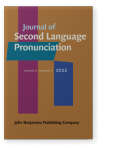Vol. 8:2 (2022) ► pp.196–217
Perception and production training effects on production of English lexical schwa by young Spanish learners
Phonetic training has been found to expedite aural and oral abilities in the L2. While considerable research has been conducted on the effects of perception training on production and of production training on perception, fewer studies have addressed them as separate training regimes in the same experimental setting outside laboratory conditions. This paper examined the effects of two training procedures (one based on production tasks and one based on perception tasks) on the production of English lexical schwa by young Spanish learners in their intact EFL classrooms. Both trained groups exhibited significant gains in the post-test and a slight advantage of the production-based trained group was observed. Learners’ orosensory awareness, self-perception, and self-feedback were actions included in this protocol which may have contributed to such advantage. Our results demonstrate that guided pronunciation training protocols can be successful in the classroom with young learners to boost production skills.
Article outline
- Introduction
- Perception and production training effects within the same experimental design
- Research questions
- Method
- Participants
- Training stimuli
- Training procedures
- Production testing
- Auditory assessment of productions
- Results
- Inter-rater agreement
- Training effects
- Discussion
- Conclusions and pedagogical implications
- Notes
-
References
